Gmc SIERRA 2500HD Denali Diesel (2015) User Manual [ru]
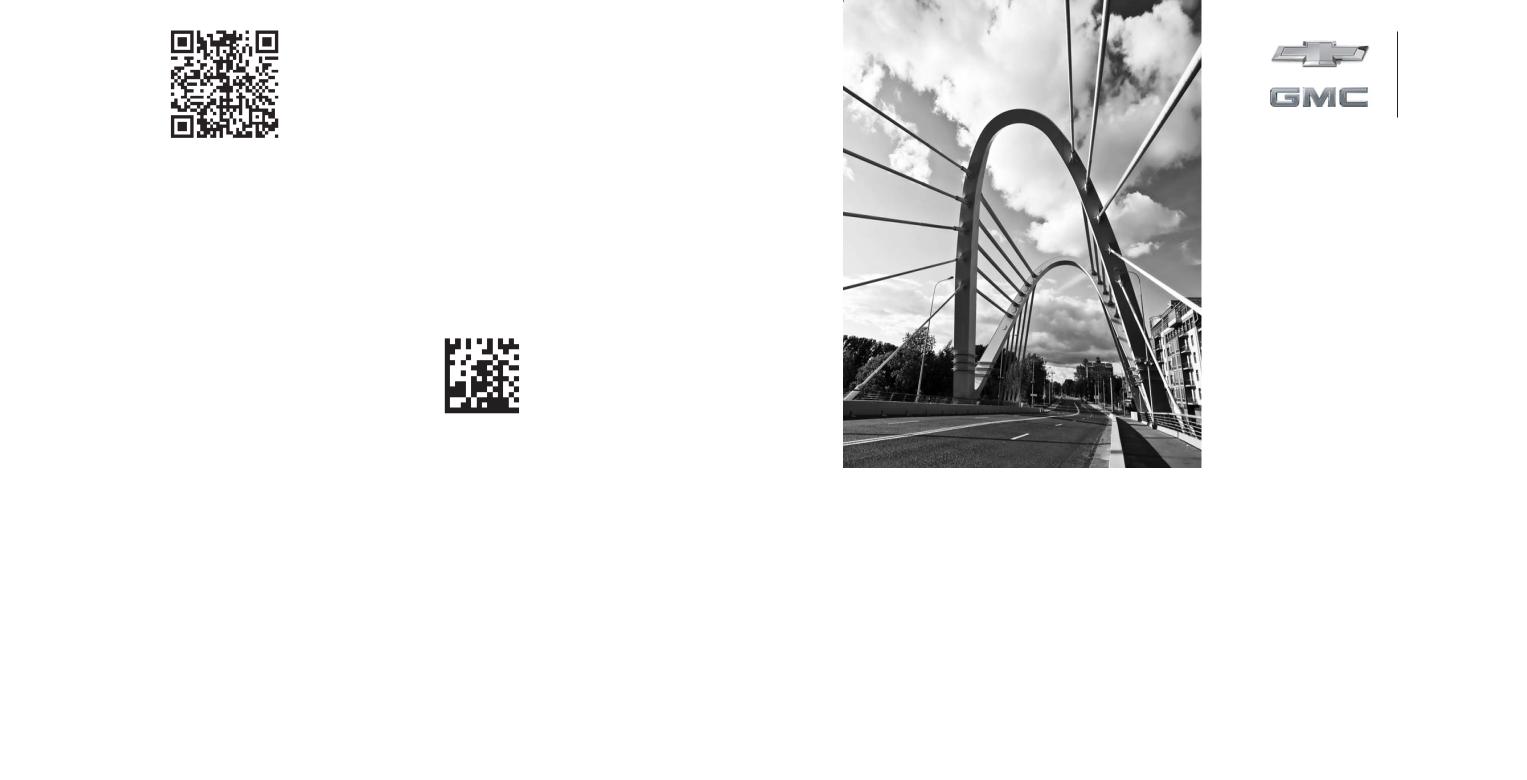
2015
Duramax Diesel

2015 Chevrolet/GMC Duramax Diesel Supplement M
In Brief . . . . . . . . . . . . . . . . . . . . . . . . 1-1
Initial Drive Information . . . . . . . . 1-1
Performance and
Maintenance . . . . . . . . . . . . . . . . . 1-2
Instruments and Controls . . . . 5-1
Warning Lights, Gauges, and
Indicators . . . . . . . . . . . . . . . . . . . . 5-2
Information Displays . . . . . . . . . . 5-11
Vehicle Messages . . . . . . . . . . . . 5-12
Vehicle Personalization . . . . . . . 5-16
Driving and Operating . . . . . . . . 9-1
Starting and Operating . . . . . . . . . 9-1
Diesel Particulate Filter. . . . . . . 9-11
Diesel Exhaust Fluid . . . . . . . . . 9-13
Brakes . . . . . . . . . . . . . . . . . . . . . . . 9-20
Fuel . . . . . . . . . . . . . . . . . . . . . . . . . . 9-21
Towing . . . . . . . . . . . . . . . . . . . . . . . 9-38
Conversions and Add-Ons . . . 9-43
Vehicle Care . . . . . . . . . . . . . . . . . 10-1
General Information . . . . . . . . . . 10-1
Vehicle Checks . . . . . . . . . . . . . . . 10-3
Service and Maintenance . . . 11-1
General Information . . . . . . . . . . 11-1
Maintenance Schedule . . . . . . . 11-3
Special Application
Services . . . . . . . . . . . . . . . . . . . . 11-7
Recommended Fluids . . . . . . . . 11-8
Maintenance Records . . . . . . . 11-12
Technical Data . . . . . . . . . . . . . . . 12-1
Vehicle Data . . . . . . . . . . . . . . . . . . 12-2
Index . . . . . . . . . . . . . . . . . . . . . i-1

ii Introduction
The names, logos, emblems, slogans, vehicle model names, and vehicle body designs appearing in this manual including, but not limited to, GM, the GM logo, CHEVROLET, GMC, the CHEVROLET and GMC Truck Emblems, SILVERADO, SIERRA, DENALI, EXPRESS, SAVANA, and Duramax are trademarks and/or service marks of General Motors LLC, its subsidiaries, affiliates, or licensors.
For vehicles first sold in Canada, substitute the name “General Motors of Canada Limited” for GMC and Chevrolet Motor Division wherever it appears in this manual.
This manual describes features that may or may not be on the vehicle because of optional equipment that was not purchased on the vehicle,
model variants, country specifications, features/applications that may not be available in your region, or changes subsequent to the printing of this owner manual.
Refer to the purchase documentation relating to your specific vehicle to confirm the features.
This manual contains information that pertains to the operation of your diesel engine. It also contains your Diesel Maintenance Schedule. The sections in this manual correspond to the sections in your owner manual. This manual, along with your owner manual, will assist you in the proper use and maintenance of your vehicle.
Keep this manual in the vehicle for quick reference.
Canadian Vehicle Owners
Propriétaires Canadiens
A French language manual can be obtained from your dealer, at www.helminc.com, or from:
On peut obtenir un exemplaire de ce guide en français auprès du concessionnaire ou à l'adresse savant:
Helm, Incorporated
Attention: Customer Service
47911 Halyard Drive
Plymouth, MI 48170
Using this Supplement
This supplement contains information specific to the unique components of the vehicle. It does not explain everything you need to know about the vehicle. Read this supplement along with the owner manual to learn about the vehicle's features and controls.
Litho in U.S.A. |
|
Part No. 22948873 B-2 Second Printing |
© 2014 General Motors LLC. All Rights Reserved. |

Introduction iii
Index
A good place to look for what you need is the Index in back of this supplement. It is an alphabetical list of what is in the supplement, and the page number where you will find it.
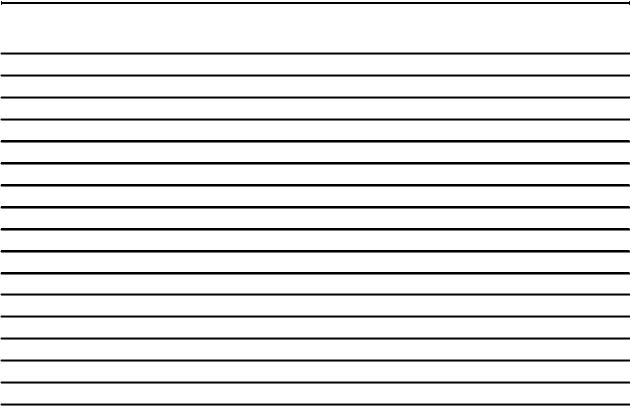
iv Introduction
2 NOTES

In Brief |
1-1 |
In Brief
Initial Drive Information
Transmission . . . . . . . . . . . . . . . . . . 1-1
Performance and Maintenance
Engine Oil Life System . . . . . . . . 1-2
Diesel Particulate Filter . . . . . . . 1-2
Diesel Exhaust Fluid . . . . . . . . . . 1-3
Initial Drive
Information
Transmission
Cold Operation
When temperatures are very cold, the transmission will prevent certain operations to protect against damage. The information below shows shift range availability based on transmission oil temperature:
.All shift ranges available at −25°C (−13°F) or above.
.2 (Second) and 3 (Third) shift ranges only at −35°C (−31°F) to −25°C (−13°F).
.2 (Second) shift range only at −35°C (−31°F) or lower.
Torque converter clutch operation will also be prevented when air or transmission oil temperatures are below certain levels.
For areas where ambient temperatures are below −40°C (−40°F), use synthetic transmission fluid approved to Allison Transmission® specification TES-295. See Recommended Fluids and Lubricants on page 11-8 and Automatic Transmission Fluid on page 10-9.
Adaptive Shift Controls
The shift quality of a new vehicle may not be ideal because the Adaptive Shift Control process may not have determined the best settings for a particular shift or condition. Shift quality will improve with continued driving.
Low Traction Mode
Low Traction Mode aids in vehicle acceleration on slippery road surfaces such as ice or snow. By selecting 2 (Second) using Range Selection Mode while at a stop, the transmission will limit torque to the drive wheels to prevent slippage.

1-2 In Brief
Heater Performance Mode
When cold weather conditions are detected, the transmission raises part throttle upshift points after the 1 (First) to 2 (Second) upshift to increase engine speed. This feature shortens engine and cab warm up times.
When the transmission is in this mode, upshifts may be delayed. This is normal and does not indicate an operational problem.
Four-Wheel Drive
When operating in 4 ↓ (Four-Wheel-Drive Low), there is a very deep gear reduction. The resulting shifts will feel exaggerated.
Performance and
Maintenance
Engine Oil Life System
The engine oil life system calculates engine oil life based on vehicle use and displays the CHANGE ENGINE OIL SOON message when it is time to change the engine oil and filter.
The oil life system should be reset to 100% only following an oil change. See “Engine Oil Life System” in the owner manual.
Diesel Particulate Filter
The Duramax engine is equipped with a Diesel Particulate Filter (DPF) that, by design, will filter or trap particulates. The DPF is located under the vehicle in the exhaust system.
Depending on a number of factors monitored by the engine computer, the DPF will need to be cleaned of accumulated solids. When a cleaning is needed, the engine
computer will initiate a cleaning action by warming the exhaust gas temperature. This feature has been designed to operate automatically, with limited operator involvement or awareness.
Cleaning the DPF (Exhaust
Filter)
While the DPF cleaning is automatically controlled by the engine computer, the vehicle will need to operate continuously until the CLEANING EXHAUST FILTER KEEP DRIVING UNTIL MESSAGE IS CLEARED message is no longer displayed. Cleaning occurs most effectively above 48 km/h (30 mph). If the vehicle is returned to idle during the cleaning process, the driver may notice a slightly different sound or a slightly elevated engine idle speed. This is normal. No action is required on the part of the driver during a regular DPF cleaning. See
Diesel Particulate Filter on page 9-11.

In Brief |
1-3 |
Special DPF Driver Messages
If the vehicle is used for numerous short trips or extended slow-speed operation, the engine computer may not be able to adequately heat up the exhaust system to clean the DPF effectively. The engine computer has been designed to continuously monitor the condition of the DPF. When the engine computer detects that the DPF is nearly full of particulates and that the vehicle is not being operated in a manner that would allow effective automatic DPF cleaning, the Driver Information Center will display the message CLEANING EXHAUST FILTER KEEP DRIVING UNTIL MESSAGE IS CLEARED.
If the vehicle continues to be driven in a manner that prevents effective DPF cleaning, the DPF will become plugged with particulates. If this occurs, the engine computer will turn on the service engine soon light in the instrument cluster and the DIC will display the message ENGINE POWER IS REDUCED.
See Diesel Particulate Filter on page 9-11 and Engine Power Messages on page 5-13.
Fuel
Use Ultra Low Sulfur Diesel
Fuel (ULSD)
Use ULSD only. The emission control hardware used on the vehicle may be damaged by using fuel with high sulfur levels. Use only fuel that is dispensed from pumps bearing the ULSD label.
Do Not Use Low Sulfur Diesel
Fuel (LSD)
Do not use fuel that is dispensed from pumps bearing the LSD label.
Do Not Use Non-Highway Fuel
Fuel labeled as off road or non-highway is typically very high in sulfur content and will damage the emission control system. Non-highway fuel is not intended for use in on-highway vehicles and
does not have the fuel properties needed by the DPF-equipped Duramax diesel.
In addition:
.Use the correct engine oil.
.Do not add gasoline to diesel fuel.
.Do not modify the induction or exhaust systems.
See Fuel for Diesel Engines on page 9-21 and Engine Oil on page 10-6.
Diesel Exhaust Fluid
Diesel Exhaust Fluid (DEF) is used with diesel engines to reduce the amount of regulated emissions produced. The DEF system must be maintained for the vehicle to run properly.

1-4 In Brief
Locating Diesel Exhaust Fluid
DEF can be purchased at a Chevrolet or GMC dealer. It can also be purchased at authorized vehicle and truck dealerships. Additionally, some diesel truck fueling stations or retailers may have DEF for purchase. For vehicles with an active OnStar® subscription, OnStar can help to locate a DEF retailer. See “Customer Assistance Offices” in the owner manual for phone numbers to assist you in contacting a GM dealer. See Recommended Fluids and Lubricants on page 11-8.
As the DEF tank becomes low on fluid, warnings begin with approximately 1600 km (1,000 mi) of remaining range. These warnings will increase in intensity as the tank becomes empty. Once the tank is empty, the vehicle speed will be limited. If there is an issue with the quality of the fluid or the exhaust fluid system, warnings will be displayed in the Driver Information Center (DIC). See Diesel Exhaust Fluid on page 9-13.
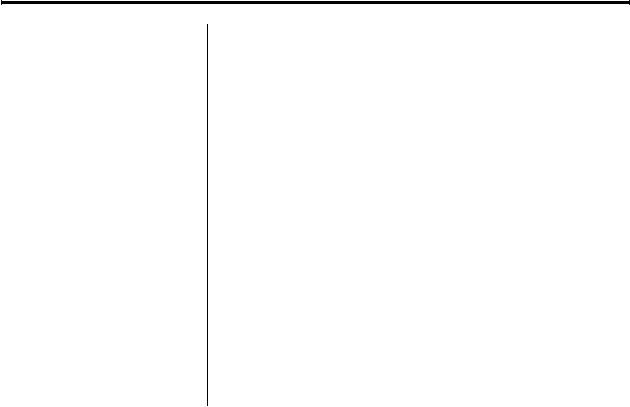
Instruments and Controls 5-1
Instruments and
Controls
Warning Lights, Gauges, and
Indicators
Instrument Cluster . . . . . . . . . . . . 5-2
Fuel Gauge . . . . . . . . . . . . . . . . . . . 5-6
Engine Oil Pressure Gauge . . . 5-7
Malfunction Indicator Lamp . . . 5-8
Wait-to-Start Light . . . . . . . . . . . 5-10
Diesel Exhaust Fluid (DEF)
Warning Light . . . . . . . . . . . . . . 5-11
Power Take-Off Light . . . . . . . . 5-11
Information Displays
Driver Information
Center (DIC) . . . . . . . . . . . . . . . . 5-11
Vehicle Messages
Vehicle Messages . . . . . . . . . . . 5-12
Engine Cooling System
Messages . . . . . . . . . . . . . . . . . . 5-12
Engine Oil Messages . . . . . . . . 5-13
Engine Power Messages . . . . 5-13
Fuel System Messages . . . . . . 5-13
Diesel Exhaust Fluid
Messages . . . . . . . . . . . . . . . . . . 5-13
Diesel Particulate Filter
Messages . . . . . . . . . . . . . . . . . . 5-14
Service Vehicle Messages . . . 5-14
Starting the Vehicle
Messages . . . . . . . . . . . . . . . . . . 5-14
Vehicle Speed Messages . . . . 5-15
Vehicle Personalization
Vehicle Personalization (Truck
Models) . . . . . . . . . . . . . . . . . . . . 5-16
Vehicle Personalization (Van
Models) . . . . . . . . . . . . . . . . . . . . 5-18

5-2 Instruments and Controls
Warning Lights, Gauges, and Indicators
Instrument Cluster
English Base Level Pickup Shown, Metric Similar

Instruments and Controls 5-3
English Uplevel Pickup Shown, Metric Similar

5-4 Instruments and Controls
English Denali Pickup Shown, Metric Similar

Instruments and Controls 5-5
English Van Shown, Metric Similar
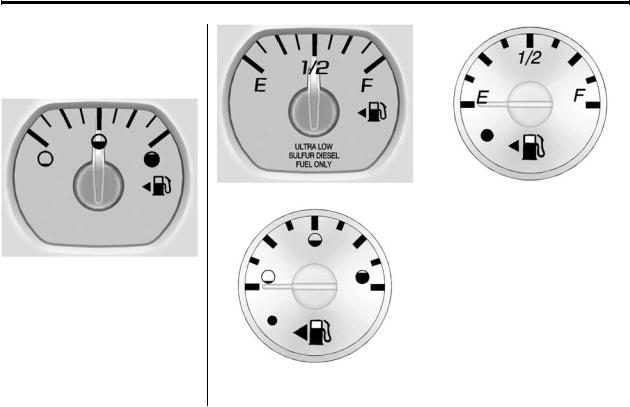
5-6 Instruments and Controls
See the owner manual for warning lights and gauges not listed in this supplement.
Fuel Gauge
English Pickup Models |
English Van Models |
When the ignition is on, the fuel gauge shows approximately how much fuel the vehicle has left in the tank. The gauge will first indicate
Metric Pickup Models E (Empty) before the vehicle is out of fuel, but the vehicle's fuel tank
should be filled soon.
An arrow on the fuel gauge indicates the side of the vehicle the fuel door is on.
Metric Van Models

Instruments and Controls 5-7
Listed are four situations customers may experience with the fuel gauge:
.At the gas station, the fuel pump shuts off before the gauge reads F (Full).
.It takes a little more or less fuel to fill up than the fuel gauge indicated. For example, the gauge may have indicated the tank was half full, but it actually took a little more or less than half the tank's capacity to fill the tank.
.The gauge moves a little while turning a corner or speeding up.
.The gauge does not go back to E (Empty) when the ignition is turned off.
None of these indicate a problem with the fuel gauge.
For information on how to fill the fuel tank, see Filling the Tank on
page 9-36.
Engine Oil Pressure
Gauge
English Pickup Models
Metric Pickup Models
Metric Van Models
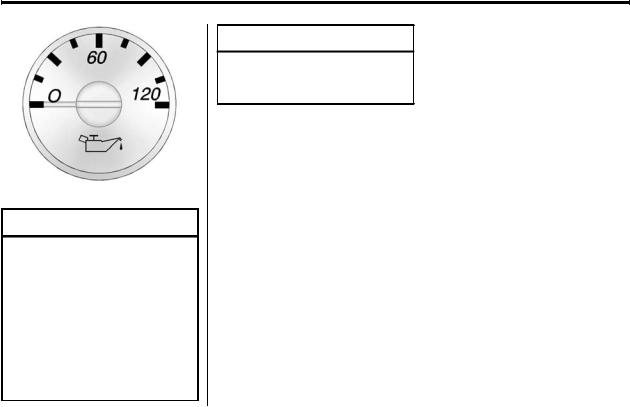
5-8 Instruments and Controls
English Van Models
{Caution
Lack of proper engine oil maintenance can damage the engine. Driving with the engine oil low can also damage the engine. The repairs would not be covered by the vehicle warranty. Check the oil level as soon as possible. Add oil if required, but if the oil level is within the operating range and the oil pressure is still
(Continued)
Caution (Continued)
low, have the vehicle serviced. Always follow the maintenance schedule for changing engine oil.
The engine oil pressure gauge reads in kPa (kilopascals) or psi (pounds per square inch) when the engine is running. Oil pressure may vary with engine speed, outside temperature, and oil viscosity.
If readings are outside the normal operating range, the low oil pressure message may display on the Driver Information Center (DIC), or for vehicles without DIC the oil pressure light will come on. If the oil pressure message or light comes on, check the oil level immediately. Do not operate the engine with the oil pressure warning light on or an ENGINE OIL LOW ADD OIL message displayed.
Malfunction
Indicator Lamp
A computer system called OBD II (On-Board Diagnostics-Second Generation) monitors the operation of the vehicle to ensure emissions are at acceptable levels, helping to maintain a clean environment. The malfunction indicator lamp comes on when the vehicle is placed in ON/RUN as a check to show it is working. If it does not, have the vehicle serviced by your dealer. See “Ignition Positions” in the owner manual.
If the malfunction indicator lamp comes on while the engine is running, this indicates that there is an OBD II problem and diagnosis and service might be required.

Instruments and Controls 5-9
This light may also come on when the Diesel Exhaust Fluid (DEF) management system is not working. See Diesel Exhaust Fluid on
page 9-13.
Malfunctions often are indicated by the system before any problem is apparent. Being aware of the light can prevent more serious damage to the vehicle. This system also assists the service technician in correctly diagnosing any malfunction.
{Caution
If the vehicle is continually driven with this light on, the emission controls might not work as well, the vehicle fuel economy might not be as good, and the engine might not run as smoothly. This could lead to costly repairs that might not be covered by the vehicle warranty.
{Caution
Modifications made to the engine, transmission, exhaust, intake,
or fuel system of the vehicle or the replacement of the original tires with other than those of the same Tire Performance Criteria (TPC) can affect the vehicle's emission controls and can cause this light to come on. Modifications to these systems could lead to costly repairs not covered by the vehicle warranty. This could also result in a failure to pass a required Emission Inspection/Maintenance test. See
Accessories and Modifications on page 10-1.
When the light is on, an emission control system malfunction has been detected on the vehicle. Diagnosis and service might be required.
An emission system malfunction might be corrected by using good quality fuel. Poor fuel quality causes the engine not to run as efficiently as designed and may cause: stalling after start-up, stalling when the vehicle is changed into gear, misfiring, hesitation on acceleration, or stumbling on acceleration. These conditions might go away once the engine is warmed up. See Fuel for Diesel Engines on page 9-21.
If this does not make the light turn off, your dealer can check the vehicle. The dealer has the proper test equipment and diagnostic tools to fix any mechanical or electrical problems that might have developed.
Emissions Inspection and
Maintenance Programs
Depending on where you live, your vehicle may be required to participate in an emission control system inspection and maintenance program. For the inspection, the

5-10 Instruments and Controls
emission system test equipment will |
. |
The OBD II (On-Board |
|
|
|
likely connect to the vehicle's Data |
|
Diagnostics) system determines |
Link Connector (DLC). |
|
that critical emission control |
|
|
systems have not been |
|
|
completely diagnosed. The |
|
|
vehicle would be considered not |
|
|
ready for inspection. This can |
|
|
happen if the 12-volt battery has |
|
|
recently been replaced or run |
|
|
down. The diagnostic system is |
The DLC is under the instrument |
|
designed to evaluate critical |
|
emission control systems during |
|
panel to the left of the steering |
|
normal driving. This can take |
wheel. See your dealer if assistance |
|
several days of routine driving. |
is needed. |
|
If this has been done and the |
The vehicle may not pass |
|
vehicle still does not pass the |
|
inspection for lack of OBD II |
|
inspection if: |
|
|
|
system readiness, your dealer |
|
. The malfunction indicator lamp is |
|
|
|
can prepare the vehicle for |
|
on with the engine running, or if |
|
|
|
inspection. |
|
the light does not come on when |
|
|
|
|
|
the ignition is turned to ON/RUN |
|
|
while the engine is off. See your |
|
|
dealer for assistance in verifying |
|
|
proper operation of the |
|
|
malfunction indicator lamp. |
|
|
Wait-to-Start Light
If the wait-to-start light comes on, the glow plug system is required and operating. Wait until the light turns off before starting the engine. This light may not come on in warm temperatures.
The fast warm-up glow plug system makes the wait-to-start light stay on for a shorter amount of time than most diesel engines.
See Starting the Diesel Engine on page 9-1.

Instruments and Controls 5-11
Diesel Exhaust Fluid |
Power Take-Off Light |
(DEF) Warning Light |
|
This light, a Driver Information Center (DIC) message, and a chime come on when there is an issue with the Diesel Exhaust Fluid.
See Diesel Exhaust Fluid Messages on page 5-13 for information on the specific message displaying with the light.
If the DEF fluid level has not been corrected, the light will continue to flash when the vehicle is started.
The vehicle's speed may also be limited.
Also see Diesel Exhaust Fluid on page 9-13.
Non-Denali Pickups
The vehicle may have a Power Take-Off (PTO) light. Under normal operating conditions, the PTO light will remain on throughout the PTO operating cycle. If all conditions required to engage PTO have not been met when enabling PTO, the PTO light will turn on, then turn off after one second. See Power Take-Off (PTO) on page 9-43.
Information Displays
Driver Information
Center (DIC)
The DIC is in the instrument cluster. The DIC comes on when the ignition is on.
A Duramax diesel vehicle may have the following additional DIC menu items.
EXHAUST FLUID LEVEL
The EXHAUST FLUID LEVEL will be displayed as either OK, XX%, or LOW.
When LOW appears on the display, add diesel exhaust fluid as soon as possible. See Diesel Exhaust Fluid on page 9-13.
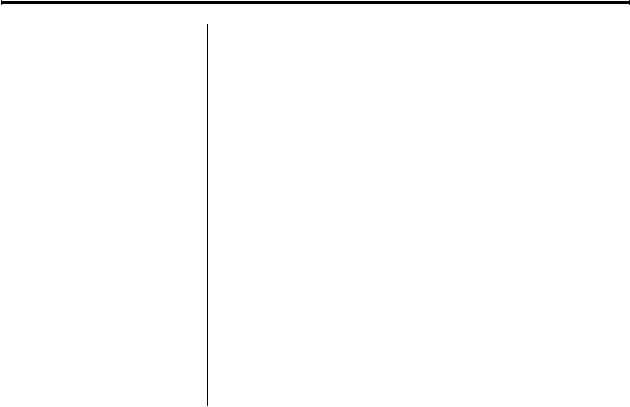
5-12 Instruments and Controls
FUEL FILTER LIFE REMAINING
This display shows an estimate of the fuel filter's remaining useful life. If you see 90% FUEL FILTER LIFE REMAINING on the display, it means 90% of the current fuel filter life remains. The fuel filter life system will alert you to change the fuel filter on a schedule consistent with your driving conditions.
When the remaining fuel filter life is low, the CHANGE FUEL FILTER message will appear on the display. Change the fuel filter as soon as possible.
FUEL FILTER LIFE RESET
You must reset the FUEL FILTER LIFE REMAINING display after each fuel filter change. It will not reset itself. Also, be careful not to reset the FUEL FILTER LIFE REMAINING display at any time other than when the fuel filter has just been changed because it cannot be reset accurately until the next fuel filter change. The fuel filter life will change to 100% when the system has been reset. To reset the system, press and hold the set/reset button, or the trip odometer reset stem if there are no DIC buttons, for
two seconds while FUEL FILTER LIFE REMAINING is displayed on the DIC.
Vehicle Messages
The Driver Information Center (DIC) will display warning messages if a problem is detected. Pressing the select button or the set/reset button for vehicles with DIC buttons, or the trip odometer reset stem for vehicles without DIC buttons, will acknowledge some current warning or service messages. Other messages are more urgent and cannot be cleared from the display until the issue is corrected.
The following are some additional messages that the Duramax diesel vehicle can display.
Engine Cooling System
Messages
COOLANT LEVEL LOW ADD COOLANT
This message will appear on the DIC if the engine coolant level is low. Adding coolant to the coolant recovery tank will clear the

Instruments and Controls 5-13
message. For pickups only, remember to check the coolant in both sides of the reservoir. See “Engine Coolant” in the owner manual.
Engine Oil Messages
ENGINE OIL LOW ADD OIL
This message only displays when the ignition key is turned to ON/RUN and the oil level in the vehicle is low. Check the oil level and correct it as necessary. You may need to let the vehicle cool or warm up and cycle the ignition to be sure this message clears.
This message clears itself after 10 seconds, until the next ignition
cycle. See Engine Oil on page 10-6.
Engine Power Messages
ENGINE POWER IS REDUCED
A computer monitors the operation of the engine. If the ENGINE POWER IS REDUCED message comes on while driving, there will be
a reduction in performance and acceleration. You should take the vehicle in for service.
Fuel System Messages
CHANGE FUEL FILTER
This message will appear on the DIC for 10 seconds when a fuel filter change is required. See Fuel Filter Replacement on page 9-33.
WATER IN FUEL SERVICE REQUIRED
This message will come on to warn you if there is water in the diesel fuel system. For more information on how this message works, see
Water in Fuel on page 9-28.
Diesel Exhaust Fluid
Messages
For more information on these messages, see “Exhaust Fluid Low” or “Exhaust Fluid Quality Poor” in
Diesel Exhaust Fluid on page 9-13.
EXHAUST FLUID RANGE: XXXX KM (MI)
When the exhaust fluid is getting low, the range will be displayed in either kilometers or miles. It is normal for the EXHAUST FLUID RANGE to vary based on vehicle and environmental driving conditions. When this message first displays at approximately 1 600 km (1,000 mi) of fluid range remaining, the fluid is approximately 11 L
(3 gal) low.
EXHAUST FLUID LOW SPEED LIMITED SOON
When the exhaust fluid range is less than 120 km (75 mi) this message will be displayed.
EXHAUST FLUID EMPTY REFILL NOW
This message will be displayed when the exhaust fluid is empty. This message may be accompanied by other messages that provide more information.
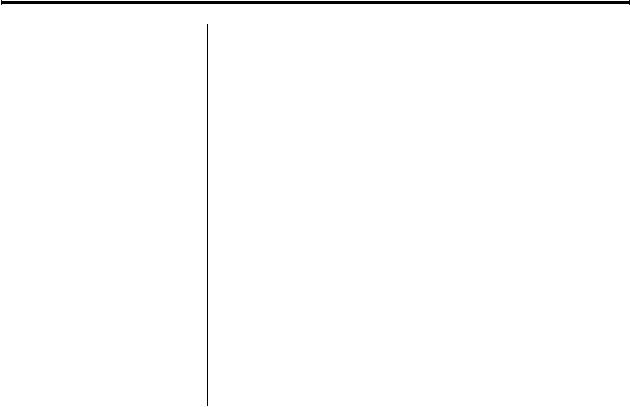
5-14 Instruments and Controls
EXHAUST FLUID QUALITY POOR SEE OWNERS MANUAL NOW
This message displays when the exhaust fluid is of poor quality or the wrong fluid was added. This message may be accompanied by other messages that provide more information.
Diesel Particulate Filter
Messages
CLEANING EXHAUST FILTER CONTINUE DRIVING (Uplevel Cluster) or DIESEL PARTIC FILTER IS FULL CONTINUE DRIVING (Base Level Cluster)
This message will appear on the DIC when an exhaust particulate filter cleaning is required. To clean the filter, drive the vehicle above 50 km/h (30 mph) until the warning message goes off. This will take about 30 minutes.
If the filter is not cleaned, the malfunction indicator lamp will come on and the ENGINE POWER IS REDUCED message will be displayed. Vehicle performance will be limited. See Diesel Particulate Filter on page 9-11.
Service Vehicle Messages
SERVICE EXHAUST FLUID SYSTEM SEE OWNERS MANUAL NOW
This message displays when the exhaust fluid system needs service. This message may be accompanied by other messages that provide more information. See “Service Exhaust Fluid System” in Diesel Exhaust Fluid on page 9-13.
SERVICE EMISSION SYSTEM SEE OWNERS MANUAL NOW
This message displays when the emission system needs service. Take the vehicle to your dealer. See “Service Emission System” in Diesel Exhaust Fluid on page 9-13.
Starting the Vehicle
Messages
ELEVATED IDLE OFF
This message will appear when the elevated idle/exhaust restrictor feature has been turned off. See “Elevated Idle” under Starting the Diesel Engine on page 9-1.
ELEVATED IDLE ON
This message will appear when the elevated idle/exhaust restrictor feature has been turned on. See “Elevated Idle” under Starting the Diesel Engine on page 9-1.
FAST IDLE ON (Van Models)
If your vehicle has this feature, this message displays when the fast idle feature is on. See “Fast Idle Control” under Starting the Diesel Engine on page 9-1.

Instruments and Controls 5-15
Vehicle Speed Messages
For more information on these messages, see Diesel Exhaust Fluid on page 9-13.
XXX KM (MI) UNTIL 105 KM/H (65 MPH) MAX SPEED
This message will be displayed along with other messages. These messages include EXHAUST FLUID EMPTY REFILL NOW, EXHAUST FLUID QUALITY POOR, SERVICE EMISSION SYSTEM, or SERVICE EXHAUST FLUID SYSTEM. The vehicle speed will be limited to
105 km/h (65 mph) when the countdown is over.
XXX KM (MI) UNTIL 88 KM/H (55 MPH) MAX SPEED
This message will be displayed along with other messages. These messages include EXHAUST FLUID EMPTY REFILL NOW, EXHAUST FLUID QUALITY POOR, SERVICE EMISSION SYSTEM, or SERVICE EXHAUST FLUID SYSTEM. The
vehicle speed will be limited to 88 km/h (55 mph) when the countdown is over.
XXX KM (MI) UNTIL 7 KM/H (4 MPH) MAX SPEED
This message will be displayed along with other messages. These messages include EXHAUST FLUID EMPTY REFILL NOW, EXHAUST FLUID QUALITY POOR,
or SERVICE EXHAUST FLUID SYSTEM. The vehicle speed will be limited to 7 km/h (4 mph) when the countdown is over.
SPEED LIMITED TO 105 KM/H (65 MPH)
This message will be displayed along with other messages. These messages include EXHAUST FLUID EMPTY REFILL NOW, EXHAUST FLUID QUALITY POOR, SERVICE EMISSION SYSTEM, or SERVICE EXHAUST FLUID SYSTEM. When this message is displayed, the vehicle speed is being limited to 105 km/h (65 mph).
SPEED LIMITED TO 88 KM/H (55 MPH)
This message will be displayed along with other messages. These messages include EXHAUST FLUID EMPTY REFILL NOW, EXHAUST FLUID QUALITY POOR, SERVICE EMISSION SYSTEM, or SERVICE EXHAUST FLUID SYSTEM. When this message is displayed, the vehicle speed is being limited to
88 km/h (55 mph).
SPEED LIMITED TO 7 KM/H (4 MPH)
This message will be displayed along with other messages. These messages include EXHAUST FLUID EMPTY REFILL NOW, EXHAUST FLUID QUALITY POOR,
or SERVICE EXHAUST FLUID SYSTEM. When this message is displayed, the vehicle speed is being limited to 7 km/h (4 mph).
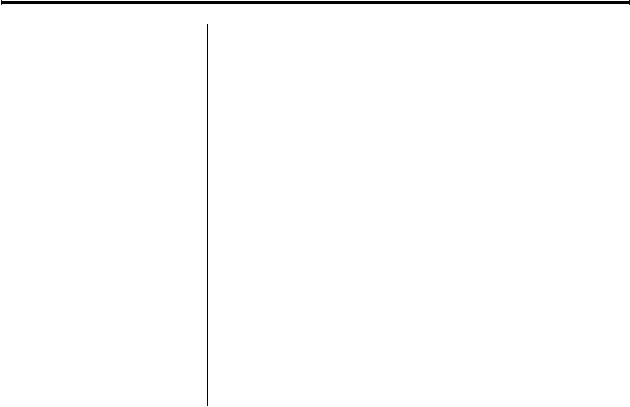
5-16 Instruments and Controls
TRANSITIONING TO XX KM/H (XX MPH) MAX SPEED
This message will be displayed along with other messages. These messages include EXHAUST FLUID EMPTY REFILL NOW, EXHAUST FLUID QUALITY POOR, SERVICE EMISSION SYSTEM, or SERVICE EXHAUST FLUID SYSTEM. When this message is displayed, the end of the countdown has been reached and the vehicle speed is being limited.
Vehicle
Personalization
Vehicle Personalization
(Truck Models)
Use the audio system controls to access the personalization menus for customizing vehicle features.
The following features may be available on some vehicles with a diesel engine. See “Vehicle Personalization” in the owner manual for additional vehicle personalizations.
System Controls
1.Turn the ignition to ON/RUN without the engine running and place the vehicle in P (Park).
To avoid excessive drain on the battery, turn the headlamps off.
2.Press the MENU knob on the radio.
3.Turn the MENU knob to scroll to SETTINGS, then press the MENU knob.
4.Turn the MENU knob to scroll to Vehicle, then press the
MENU knob.
5.Turn the MENU knob to scroll to the desired menu, then press the MENU knob.
Vehicle
Select and the following may display:
.Climate and Air Quality
.Power Take-Off (PTO)
Climate and Air Quality
Select and the following may display:
.Elevated Idle (If Equipped)
Elevated Idle (If Equipped)
This allows the feature to be turned on and off. See “Elevated Idle” in
Starting the Diesel Engine on page 9-1.

Instruments and Controls 5-17
Select Off, or On.
Power Take-Off (PTO)
There may be additional features that can be customized for the Power Take-Off (PTO). See Power Take-Off (PTO) on page 9-43. See your dealer to enable these features.
Feature Settings Menu Items
Press the MENU knob to select the desired setting.
.Standby Speed
.Set 1 Speed
.Set 2 Speed
.Tap Step Speed
.Shutdown Time
Turn the MENU knob to scroll to one of the following menu selections:
PTO STANDBY SPEED
This feature allows for modifying the PTO Standby Speed.
Turn the MENU knob to the desired setting. Press the MENU knob to select the desired setting.
PTO SET 1 SPEED
This feature is available if the vehicle is configured for Stationary Preset PTO, and allows the selection of the PTO 1 set speed.
Turn the MENU knob to the desired PTO Standby Set 1 setting. Press the MENU knob to select the desired setting.
PTO SET 2 SPEED
This feature is available if the vehicle is configured for Stationary Preset PTO, and allows the selection of the PTO 2 set speed.
Turn the MENU knob to the desired PTO Standby Set 2 setting. Press the MENU knob to select the desired setting.
PTO TAP STEP SPEED
This feature is available if the vehicle is configured for Stationary Variable or Mobile PTO, and allows the selection of the PTO tap step speed.
Turn the MENU knob to the desired PTO Tap Step Speed setting. Press the MENU knob to select the desired setting.
PTO SHUTDOWN TIME
This feature is available if the vehicle is configured for Stationary Preset or Stationary Variable PTO, and allows the selection of the PTO shutdown time.
Turn the MENU knob to the desired PTO Shutdown Time setting. Press the MENU knob to select the desired setting.
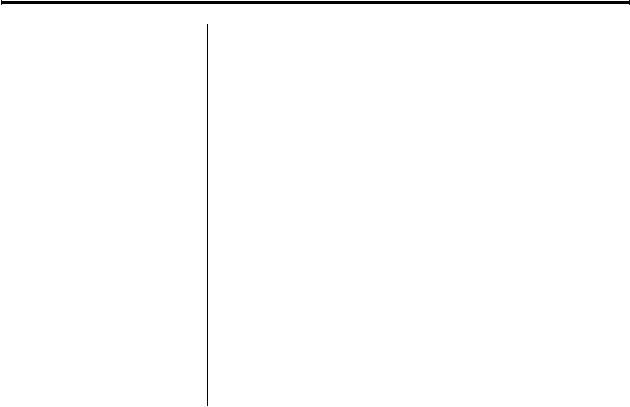
5-18 Instruments and Controls
Vehicle Personalization
(Van Models)
Your Duramax diesel vehicle may have additional customizable features for Power Take-Off (PTO). See Power Take-Off (PTO) on page 9-43. These features may need to be enabled by your dealer.
Entering the Feature
Settings Menu
1.Turn the ignition to ON/RUN without the engine running and place the vehicle in P (Park).
To avoid excessive drain on the battery, it is recommended that the headlamps are turned off.
2.Press the customization DIC button on the instrument panel to scroll through the available customizable options.
Feature Settings Menu Items
PTO STANDBY SPEED
This feature allows you to select the PTO standby speed.
Press the customization button until the PTO STANDBY SPEED screen appears on the DIC display. Press the set/reset button once to access the settings for this feature. Then press the customization button to scroll through the following choices:
.800 RPM
.900 RPM
.1000 RPM
.1100 RPM
.1200 RPM
.1300 RPM
.1400 RPM
.1500 RPM
.NO CHANGE
To select a setting, press the set/ reset button while the desired setting is displayed on the DIC.
PTO SET 1 SPEED
This feature, available if the vehicle is configured for Stationary Preset PTO, allows you to select the PTO 1 set speed.
Press the customization button until the PTO SET 1 SPEED screen appears on the DIC display. Press the set/reset button once to access the settings for this feature. Then press the customization button to scroll through the following choices:
.1000 RPM
.1200 RPM
.1400 RPM
.1600 RPM
.1800 RPM
.2000 RPM
.2200 RPM
.2400 RPM
.NO CHANGE
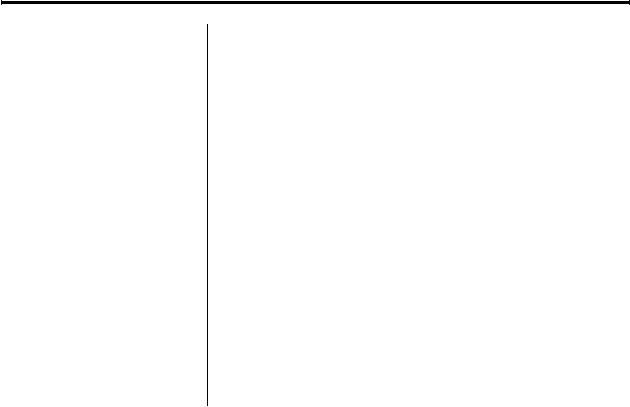
Instruments and Controls 5-19
To select a setting, press the set/ reset button while the desired setting is displayed on the DIC.
PTO SET 2 SPEED
This feature, available if the vehicle is configured for Stationary Preset PTO, allows you to select the PTO 2 set speed.
Press the customization button until the PTO SET 2 SPEED screen appears on the DIC display. Press the set/reset button once to access the settings for this feature. Then press the customization button to scroll through the following choices:
.1800 RPM
.2000 RPM
.2200 RPM
.2400 RPM
.2600 RPM
.2800 RPM
.3000 RPM
.3200 RPM
.NO CHANGE
To select a setting, press the set/ reset button while the desired setting is displayed on the DIC.
PTO TAP STEP
This feature, available if the vehicle is configured for Stationary Variable or Mobile PTO, allows you to select the PTO tap step.
Press the customization button until the PTO TAP STEP screen appears on the DIC display. Press the set/ reset button once to access the settings for this feature. Then press the customization button to scroll through the following choices:
.25 RPM
.75 RPM
.100 RPM
.150 RPM
.200 RPM
.250 RPM
.350 RPM
.NO CHANGE
To select a setting, press the set/ reset button while the desired setting is displayed on the DIC.
PTO SHUTDOWN TIME
This feature, available if the vehicle is configured for Stationary Preset or Stationary Variable PTO, allows you to select the PTO
shutdown time.
Press the customization button until the PTO SHUTDOWN TIME screen appears on the DIC display. Press the set/reset button once to access the settings for this feature. Then press the customization button to scroll through the following choices:
.OFF
.20 MINUTES
.35 MINUTES
.50 MINUTES

5-20 Instruments and Controls
.
.
.
.
.
65 MINUTES
80 MINUTES
95 MINUTES
110 MINUTES
NO CHANGE
To select a setting, press the set/ reset button while the desired setting is displayed on the DIC.
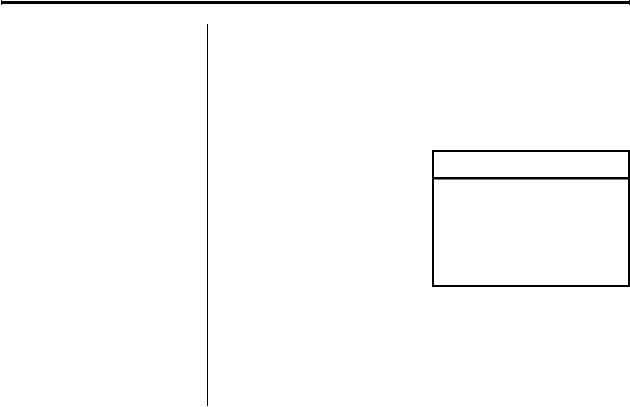
Driving and Operating 9-1
Driving and
Operating
Starting and Operating
Starting the Diesel Engine . . . . 9-1 Winter Cover . . . . . . . . . . . . . . . . . . 9-5 Engine Heater . . . . . . . . . . . . . . . . . 9-9 Fuel Operated
Heater (FOH) . . . . . . . . . . . . . . . 9-10 Parking over Things
That Burn . . . . . . . . . . . . . . . . . . 9-11
Diesel Particulate Filter
Diesel Particulate Filter . . . . . . 9-11
Diesel Exhaust Fluid
Diesel Exhaust Fluid . . . . . . . . . 9-13
Brakes
Exhaust Brake . . . . . . . . . . . . . . . 9-20
Fuel
Fuel for Diesel Engines . . . . . . 9-21 What Fuel to Use in
The U.S. . . . . . . . . . . . . . . . . . . . 9-21 What Fuel to Use in Canada
and Mexico . . . . . . . . . . . . . . . . . 9-26 Cold Weather Operation . . . . . 9-27 Water in Fuel . . . . . . . . . . . . . . . . 9-28 Running Out of Fuel . . . . . . . . . 9-32 Fuel Filter Replacement . . . . . 9-33 Filling the Tank . . . . . . . . . . . . . . 9-36 Filling a Portable Fuel
Container . . . . . . . . . . . . . . . . . . . 9-37
Towing
Trailer Towing . . . . . . . . . . . . . . . . 9-38
Conversions and Add-Ons
Power Take-Off (PTO) . . . . . . . 9-43
Starting and
Operating
Starting the Diesel
Engine
The diesel engine starts differently than a gasoline engine.
{Caution
If the steering wheel is turned until it reaches the end of its travel, and is held in that position while starting the vehicle, damage may occur to the hydraulic power steering system and there may be loss of power steering assist.
Move the shift lever to P (Park) or N (Neutral). To restart the engine when the vehicle is already moving, use N (Neutral) only.
